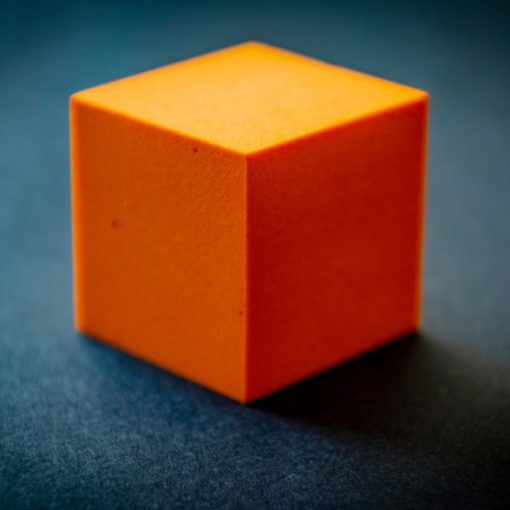Divergent thinking is a cognitive process that involves generating multiple unique ideas or solutions to a given problem or question. It is often associated with creativity and plays an essential role in problem-solving, innovation, and artistic expression. Memory, on the other hand, is the ability to encode, store, and retrieve information. Research has shown that divergent thinking and memory share close connections and can influence each other in various ways.
Understanding these connections can help determine how cognitive processes like working memory and semantic memory impact one’s ability to think creatively. Moreover, this knowledge can have practical applications in the fields of education, therapy, and personal development. By investigating and evaluating divergent thinking, researchers can better understand individual differences and how they influence creativity throughout a person’s life.
Key Takeaways
- Divergent thinking and memory share a close connection in cognitive processes.
- Exploring this connection can lead to practical applications in education and personal development.
- Studying and evaluating divergent thinking sheds light on individual differences and creativity’s impact across a person’s lifespan.
Understanding Divergent Thinking and Memory
Divergent Thinking Defined
Divergent thinking is a cognitive process that generates various ideas and potential solutions to a given problem. It involves exploring multiple directions and possibilities rather than converging on a single idea or solution. Divergent thinking is characterized by originality, flexibility, and ideation, making it essential for creative thinking and problem solving.
Role of Memory in Divergent Thinking
Memory plays a significant role in the divergent thinking process. Working memory, in particular, is crucial for the generation of original ideas. A study found that originality in divergent thinking is associated with working memory-related brain activity. This association suggests that the ability to access stored information and generate new ideas depends on an individual’s working memory capacity.
Link Between Divergent Thinking and Creativity
There is a strong link between divergent thinking and creativity. Originality, one of the primary attributes of divergent thinking, contributes significantly to creative thinking and problem-solving. The process of generating multiple solutions for a problem helps individuals to think beyond conventional ideas, leading to innovative and imaginative outcomes. In this way, divergent thinking promotes creativity and enables individuals to approach problems with greater flexibility and adaptability.
Cognitive Processes Involved
Working Memory
Working memory plays a significant role in divergent thinking, as it enables individuals to hold and manipulate information in their mind while generating novel ideas and solutions. It is a key component of executive functions, which are essential for effective problem-solving and creative thinking. Furthermore, the originality of divergent thinking is associated with working memory, allowing individuals to produce unique and unconventional responses.
Convergent Thinking
While divergent thinking typically focuses on generating multiple, unique solutions, convergent thinking involves narrowing down the options to find a single, correct answer. It is a more analytical process and is often associated with intelligence. However, semantic memory—the memory system that stores semantic concepts—is crucial for both convergent and divergent thinking, as it enables individuals to retrieve information and apply it in various cognitive processes.
Brain Activity Associated
There are distinct neural mechanisms linked to divergent creative thinking. Episodic retrieval—the process of retrieving specific elements of prior experiences—has been suggested to support divergent thinking. This is evident through greater activation of the ventral attention system, which is responsible for reorienting attention, and reduced task-induced deactivation of the default mode network, indicating alterations in attentional reallocation.
In conclusion, divergent and convergent thinking are intricately connected to cognitive processes such as working memory, intelligence, and various brain activities. By understanding these connections, we can better comprehend how individuals approach problem-solving and demonstrate creativity.
Testing and Evaluation of Divergent Thinking
Divergent thinking is an essential aspect of creativity and problem-solving. In order to effectively assess an individual’s divergent thinking capabilities, various tests and evaluations have been designed.
Torrance Tests of Creative Thinking
The Torrance Tests of Creative Thinking (TTCT) are among the most well-known and widely used measures of divergent thinking. Developed by Paul Torrance in the 1960s, these tests are designed to evaluate fluency, flexibility, originality, and elaboration in both verbal and figural tasks. TTCT consists of different activities and exercises, where individuals are required to generate multiple ideas, responses, or solutions.
Some common tasks found in the TTCT include:
- Drawing tasks, such as completing an unfinished image and producing a title for the completed picture.
- Listing tasks, where participants must generate a comprehensive list of ideas or possible uses for a given object or concept.
Alternative Uses Test
Another important test used for evaluating divergent thinking is the Alternative Uses Test (AUT). This test, designed by J.P. Guilford in the 1950s, assesses divergent thinking by asking individuals to list as many alternative uses for a common object (such as a paperclip, a brick, or a shoe) within a specific time frame.
The AUT evaluates the following dimensions of divergent thinking:
- Fluency: The total number of responses generated within the given time.
- Flexibility: The variety of different categories or types of uses listed.
- Originality: The uniqueness and novelty of the generated ideas.
Both the Torrance Tests of Creative Thinking and the Alternative Uses Test serve as valuable tools in the assessment of divergent thinking skills. By measuring these abilities, researchers can gain a better understanding of an individual’s creative potential and problem-solving capabilities.
Effect of Divergent Thinking on Individual Differences
Impact on Problem Solving
Divergent thinking is recognized for its role in generating multiple and varied solutions to complex problems, emphasizing the significance of individual differences. This ability demonstrates a strong impact on problem-solving skills, as individuals high in divergent thinking flexibility have a wider range of alternatives for addressing issues that may arise 1.
Research suggests a breakpoint at an intelligence quotient (IQ) of 109.20 when investigating the relationship between fluency or flexibility of divergent thinking and intelligence 2. Above this level, cognitive capabilities and divergent thinking may further enhance problem-solving skills. Furthermore, those with higher divergent thinking abilities have a unique approach to problem-solving, often leading to more innovative and effective solutions.
Relation with Cognitive Style
The field-dependent-independent cognitive style refers to the extent to which individuals rely on external cues (field-dependent) or internal cues (field-independent) to process and interpret information. Divergent thinking is linked to field-independent cognitive styles, indicating a stronger ability to separate relevant information from the surrounding context 3. This trait plays a crucial role in enhancing thinking flexibility and contributes significantly to the individual differences observed in problem-solving approaches.
In summary, divergent thinking directly impacts an individual’s ability to solve complex problems and is closely related to field-independent cognitive styles. The resulting increase in thinking flexibility allows for more innovative solutions and better adaptation to novel situations, highlighting its role in distinguishing individual differences.
Footnotes
Influence of Divergent Thinking Across Lifespan
Divergent Thinking in Childhood
Divergent thinking, an essential component of creativity, plays a crucial role during childhood as it aids in generating unique and innovative ideas. During the early years, particularly in the preschool phase, children exhibit a natural inclination towards divergent thinking, fueling their growth and learning processes. In the context of school, divergent thinking enables students to discover multiple solutions to problems, fostering a flexible and adaptive mindset.
As children progress towards adolescence, their divergent thinking abilities continue to develop. They may exhibit increased creative expression, curiosity, and cognitive flexibility. In this stage, their experiences and exposure to various stimuli further nurture their divergent thinking abilities.
Adulthood and Divergent Thinking
In adulthood, divergent thinking becomes crucial for problem-solving, decision-making, and adapting to new challenges. Some studies indicate that divergent thinking tends to peak in early adulthood and decline later on ^(1^). However, it is essential to note that individuals may still exhibit unique creative expressions and problem-solving abilities in their older years.
Research on creativity suggests that engaging in activities that promote divergent thinking can help maintain cognitive functioning throughout adulthood. These activities can range from brainstorming sessions, participating in team collaborations, and exploring various interests. By continually exposing oneself to novel experiences and challenges, adults can further enhance their divergent thinking skills and overall cognitive health.
Practical Applications and Training
Divergent Thinking in Education
Divergent thinking plays a vital role in education, as it encourages students to generate multiple ideas and explore various possibilities. This process helps in maximizing the potential solutions, applications, and examples in a learning environment. One way to promote divergent thinking in the classroom is through journaling, which can encourage self-analysis and stimulate students to think of many solutions to a question1.
Incorporating techniques like the n-back task can also sharpen students’ memory and attention, further supporting creative thinking. The n-back task is a mental exercise that involves recalling a specific stimulus presented n steps earlier in a sequence. By improving working memory and cognitive abilities, students can enhance their divergent thinking skills.
Methods for Creativity Training
There are several methods available for creativity training, which can help improve both imagination and creative performance. Some strategies for boosting divergent thinking include:
- Brainstorming: Encourage participants to generate a large number of ideas, without focusing on the quality or feasibility of each idea.
- Storyboarding: Use a sequence of images or illustrations to visualize and explore ideas, fostering creative thinking and problem-solving.
- Metaphorical thinking: Train individuals to use analogies and metaphors to understand abstract concepts and generate imaginative ideas.
- Role-playing: Have participants assume different roles or perspectives, encouraging them to think flexibly and come up with alternative solutions.
It’s crucial to note that while divergent thinking is an essential aspect of creativity, it needs to be paired with convergent thinking to yield successful creative outcomes. A balance between the two approaches allows individuals to generate numerous ideas and then refine, evaluate, and select the most effective solution.
Footnotes
Conclusion
Divergent thinking plays a significant role in fostering creativity. As an essential aspect of cognition, divergent thinking allows individuals to explore multiple solutions to a given problem rather than following a linear, convergent approach. It contributes positively to the development of innovative ideas and facilitates problem-solving abilities.
Memory is closely associated with divergent thinking. In particular, working memory-related brain activity has been found to correlate with the originality of divergent thinking. This relationship indicates a link between the ability to hold and manipulate information and the capacity to generate novel solutions.
Semantic memory structure also plays a vital role in divergent thinking and fluid intelligence. Analyzing semantic networks in children using network science methodology provides insights into how bottom-up processes (divergent thinking) and top-down processes (fluid intelligence) interact with the structure of these networks, as shown in a research study.
Thus, the development of divergent thinking abilities combined with a strong memory foundation can positively impact creativity, problem-solving skills, and overall cognitive function. Encouraging and nurturing these skills can lead to the growth of innovative thinkers and problem-solvers capable of pushing the boundaries of knowledge and understanding.
Frequently Asked Questions
What are common exercises to enhance divergent thinking?
Divergent thinking focuses on exploring multiple solutions to problems or viewing situations from different perspectives. Some common exercises to enhance divergent thinking include brainstorming, mind mapping, word associations, and the Alternative Uses Task (AUT). These exercises encourage creative, flexible, and innovative thinking, helping individuals to generate multiple solutions and ideas.
How does divergent thinking influence the design process?
Divergent thinking plays a crucial role in the design process, as it allows designers to consider multiple concepts, ideas, and possibilities. This creative thinking process expands the range of design options and aids in identifying innovative solutions. Divergent thinking ultimately supports designers in developing more effective and creative designs, which cater to various needs and contexts.
What are the key components of divergent thinking?
Divergent thinking entails several components, including fluency, flexibility, originality, and elaboration. Fluency involves generating numerous ideas, while flexibility requires shifting between different perspectives and approaches. Originality focuses on producing unique and innovative ideas, and elaboration means refining and expanding on initial ideas to create more detailed and intricate solutions.
How does divergent thinking relate to intelligence?
Divergent thinking is closely related to intelligence, especially fluid intelligence, which involves the ability to adapt and solve novel problems. Divergent thinking fosters creative problem-solving and enhances individuals’ capacity to generate multiple solutions. Therefore, it can be considered an essential aspect of cognitive functioning and intelligence.
What is the role of memory in divergent thinking?
Memory, particularly episodic memory, plays a significant role in divergent thinking. Episodic memory stores personal experiences and events, helping individuals retrieve relevant information when generating creative ideas. Memory retrieval during divergent thinking tasks, such as the Alternate Uses Task, contributes to the formulation of diverse and innovative solutions.
How can educators promote divergent thinking in students?
Educators can promote divergent thinking in students by creating supportive learning environments that encourage exploration and experimentation. Implementing open-ended assignments, collaborative projects, and brainstorming activities fuel students’ creative thinking. Also, providing constructive feedback and acknowledging multiple perspectives can cultivate a growth mindset and foster divergent thinking in the classroom.





